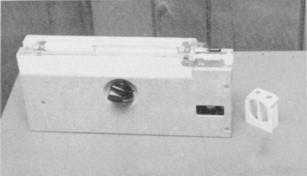Figure 2-17.—A typical electric psychrometer.
We have just covered several types of simple
thermometers. Most frequently, the thermometers used
by Aerographer’s Mates are found in psychrometers.
Q11.
Q12.
Q13.
Q14.
Q15.
REVIEW QUESTIONS
What are the two primary liquids found in
thermometers?
Where can you find detailed instructions for use
and care of the different types of thermometers?
How should the temperature be read from a
liquid-in-glass thermometer?
How often should the wick on a wet-bulb
thermometer be changed aboard ship?
What instruction outlines procedures to be
followed in the event of a mercury spill?
PSYCHROMETERS
LEARNING OBJECTIVES:
Define
psychrometer. Explain the care and use of the
electric, sling, and rotor psychrometers.
A psychrometer is any device that contains both a
dry-bulb and a wet-bulb thermometer used to measure
ambient air temperature and wet-bulb air temperature.
Currently there are three different types of
psychrometers used by the Navy and Marine Corps: the
electric psychrometer, the sling psychrometer, and the
rotor psychrometer.
ELECTRIC PSYCHROMETER
Electric psychrometers are used aboard some ships
as the primary air temperature/wet-bulb temperature-
measuring device. They are kept on hand at all shore
observation sites as a backup for automatic air
temperature and dew-point sensors. There are several
slightly different models of electric psychrometers in
use: the ML-45O/UM and the ML-450(A)/UM through
the ML-45O(D)/UM models, and the "Type III" electric
psychrometer. Figure 2-17 shows a typical electric
psychrometer. All models contain a dry- and a wet-bulb
thermometer, a small, battery-operated electric fan,
several batteries, thermometer illumination lights, and a
small distilled-water bottle.
Electric psychrometers should be allowed to
acclimatize to the ambient conditions if kept inside an
office space, especially during extremely cold or hot
weather. When the outside air temperature is cooler
than 50°F or warmer than 85°F, allow the psychrometer
to sit in a sheltered outside area 5 to 10 minutes before
using. When the air temperature is below freezing, wet
the wick and allow the psychrometer to sit 15 minutes
before using, to allow the wick to freeze.
To avoid acclimatization time, many shipboard
observers store the psychrometer outside in a sheltered
location. You must take care to ensure that the
psychrometer is held securely in the storage location to
prevent breakage from the ship’s motions. Ashore, the
electric psychrometers are usually stored outside in the
instrument shelter.
To use the electric psychrometer properly, wet the
muslin wick with a few drops of distilled water from the
bottle. Then, stand on the windward side of the ship or
building with the air intake pointed toward the wind,
turn the fan motor on, and hold the psychrometer at
arm’s length. The scale lights should be turned on only
when you read the temperatures. After 60 seconds, read
the wet-bulb temperature at lo-second intervals until
the temperature reads the same for two consecutive
readings.
Record both the wet- and dry-bulb
temperatures to the nearest 1/10 degree. Then, turn the
fan motor off.
When issued, each electric psychrometer is
supplied with a use, care, and maintenance handbook.
Routine care and maintenance of the electric
psychrometer include changing the wet-bulb wick,
keeping the psychrometer clean and dry, and changing
the batteries and light bulbs. Cleaning and lubrication
of the electric motor are also required.
For more
2-12

